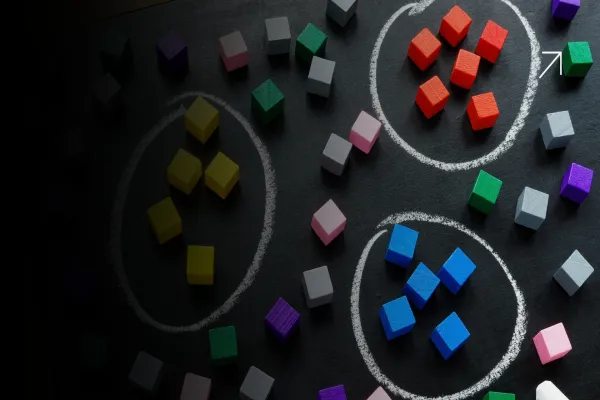Pharma marketing has reached a turning point. Doctors are overwhelmed with information. Patients are distracted, skeptical, and inconsistent in following therapies. Regulators keep tightening the rules. Traditional campaigns, no matter how polished, struggle to cut through this noise. That’s where gamification in pharma enters the picture. Gamification doesn’t mean gimmicks. It means applying proven behavioral design techniques to create engagement that sticks. Done right, gamification increases patient activation, improves doctor engagement, and sustains digital healthcare engagement at scale: all while staying compliant.
Why Gamification Matters in Pharma Marketing Today
Gamification is no longer limited to fitness apps or gaming platforms. In healthcare, it’s becoming a serious driver of measurable outcomes.
Why patients need activation, not just awareness
Patients don’t fail because of lack of information; they fail because of lack of motivation. Gamification helps by turning adherence into a rewarding journey. A nudge here, a milestone badge there; it keeps patients moving.
How doctor engagement benefits from gamification
Doctors are busy. They don’t have time for passive learning. Gamified learning modules, CME credits tied to case-based quizzes, or interactive product simulations keep doctors engaged longer and more effectively than static PDFs.
Why digital healthcare engagement needs new methods
Digital campaigns alone risk becoming background noise. Gamification makes them interactive. Instead of pushing content, pharma brands create participation. And participation builds memory, trust, and long-term engagement.
Strategy One: Gamification for Patient Activation
The first battlefield is patient behavior. Without activation, therapies fail, no matter how good the drug.
Making adherence measurable and rewarding
Patients often abandon therapy within months. Gamification builds motivation: tracking adherence, showing progress, and rewarding consistency. What used to feel like a chore becomes a visible achievement.
Using micro-goals to sustain engagement
Long therapies overwhelm patients. Breaking them into smaller, gamified milestones helps patients see progress. “Complete 7 days of therapy” is easier to commit to than “12 months.”
Examples from digital healthcare engagement
Diabetes apps that reward daily logging, oncology programs that track treatment milestones, or fertility support apps that celebrate patient progress: all show gamification’s power in real-world patient activation.
Strategy Two: Gamification for Doctor Engagement
Doctors are central to pharma marketing, but traditional approaches are stale. Gamification adds value and interactivity.
CME through gamified case studies
Instead of long lectures, doctors engage more with gamified CME, interactive scenarios where they solve cases, earn credits, and benchmark against peers.
Simulation-based product education
Doctors learn better through doing. Gamified simulations allow them to “test drive” therapies in virtual cases. This builds confidence far better than brochures.
Peer leaderboards and recognition
Doctors are competitive. Recognition through gamified leaderboards (e.g., CME completion rates, knowledge tests) boosts motivation and creates a culture of continuous learning.
Strategy Three: Phygital Gamification Models
Gamification doesn’t have to be digital-only. The most effective programs combine physical and digital touchpoints.
Health camps with digital follow-ups
Patients who attend a camp get enrolled in a digital journey where progress is gamified: tests completed, milestones achieved, lifestyle goals tracked.
Rep-led gamified education
Reps introduce gamified content during visits, quizzes, interactive modules, then direct doctors to portals for ongoing engagement. This merges credibility with digital scale.
Building continuity across channels
Gamification works best when it flows seamlessly. An offline trigger (seminar, rep visit) should always lead to a digital engagement loop. That’s how campaigns stay alive beyond the event.
Strategy Four: Ensuring Compliance in Gamification
Gamification must never cross regulatory lines. Compliance-first design is non-negotiable.
Guardrails in patient rewards
Rewards can’t be monetary or inducements. They must be intrinsic motivators: progress tracking, badges, recognition. This keeps gamification compliant while still effective.
Transparent, audit-ready design
Every gamified program should generate logs of interactions. That way, if regulators ask, CMOs can show patient activation and doctor engagement were educational, not promotional.
Aligning with ethical digital healthcare engagement
Gamification isn’t about manipulation; it’s about motivation. The difference lies in intent. Campaigns must be designed to support adherence and education, not push prescriptions indirectly.
Strategy Five: Measuring ROI from Gamification in Pharma
Like every marketing initiative, gamification must prove its worth.
Tracking patient activation metrics
Measure therapy adherence rates, program completion, and lifestyle changes. When gamification doubles adherence, the ROI is obvious.
Doctor engagement analytics
Look at CME module completions, quiz participation rates, and portal logins. Gamification consistently drives higher engagement than static content.
Business impact beyond engagement
For CMOs, the boardroom question is always ROI. When gamification increases patient adherence or shortens doctor onboarding cycles, the business impact is measurable, and defensible.
Conclusion
Gamification in pharma is not about games. It’s about outcomes. Patient activation, doctor engagement, and sustainable digital healthcare engagement all benefit when campaigns use behavioral design to keep audiences motivated. For CMOs, gamification is not a gimmick. It’s a strategic lever for growth in 2025.
Your Next Step in Gamified Pharma Marketing
Gamification is here to stay. The CMOs who design compliance-first, outcome-driven gamification strategies will own patient activation and doctor engagement in the years ahead. The ones who treat it as a gimmick will miss its potential.





